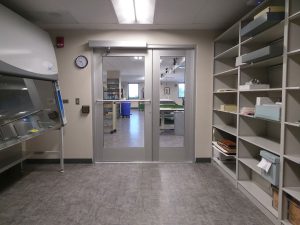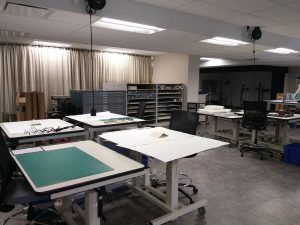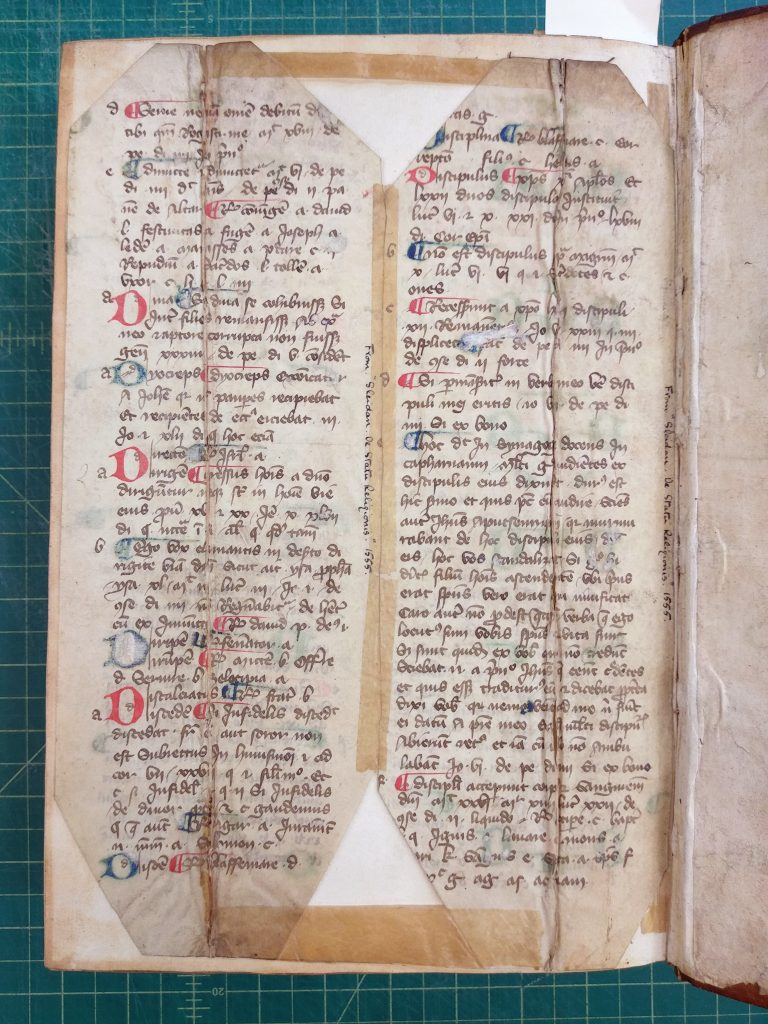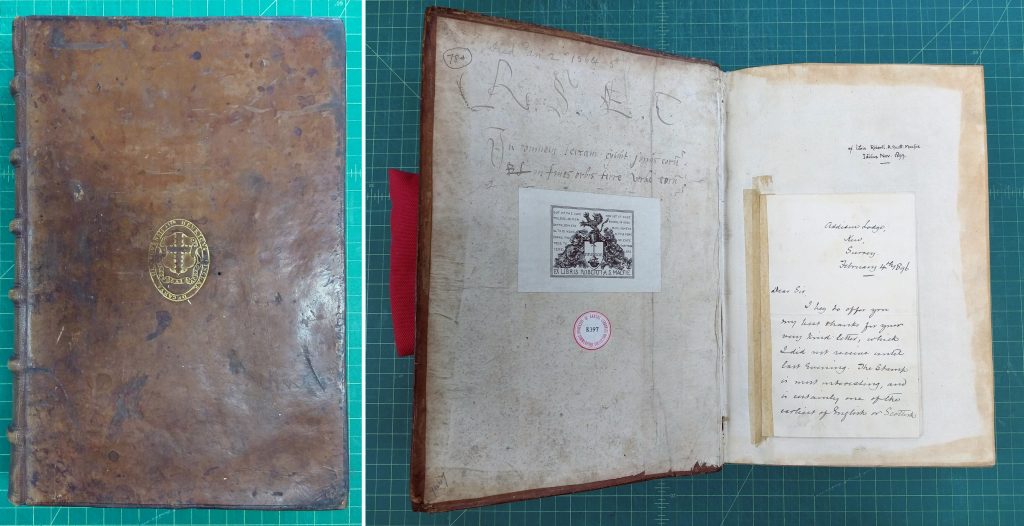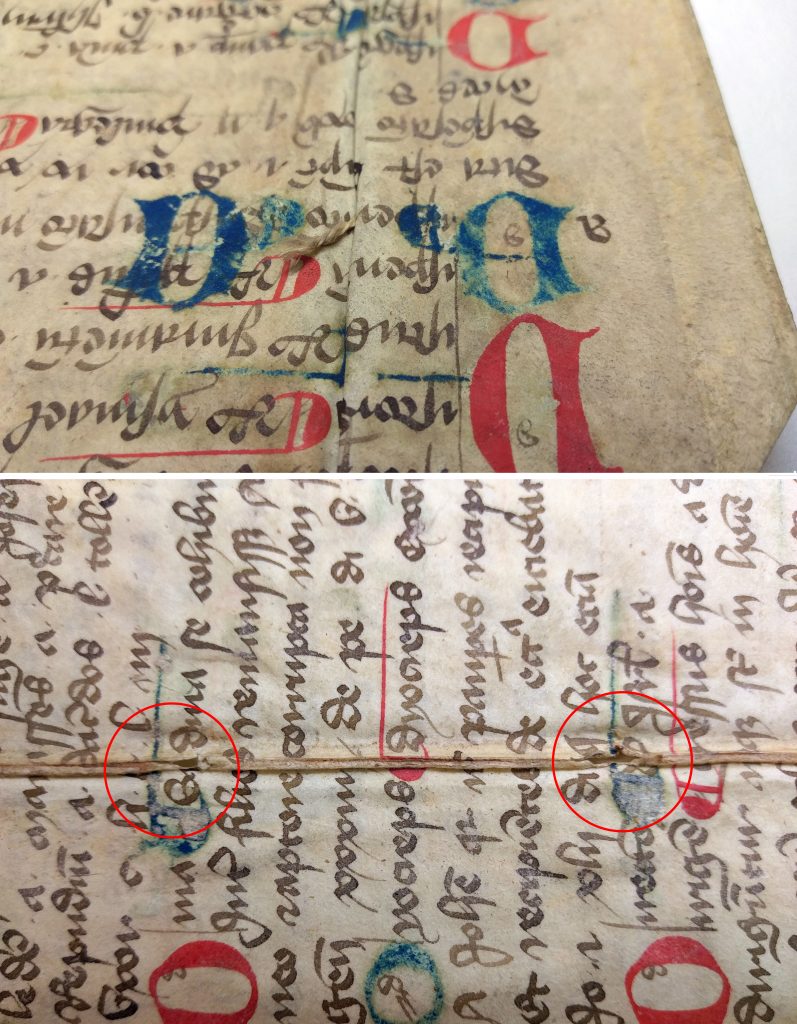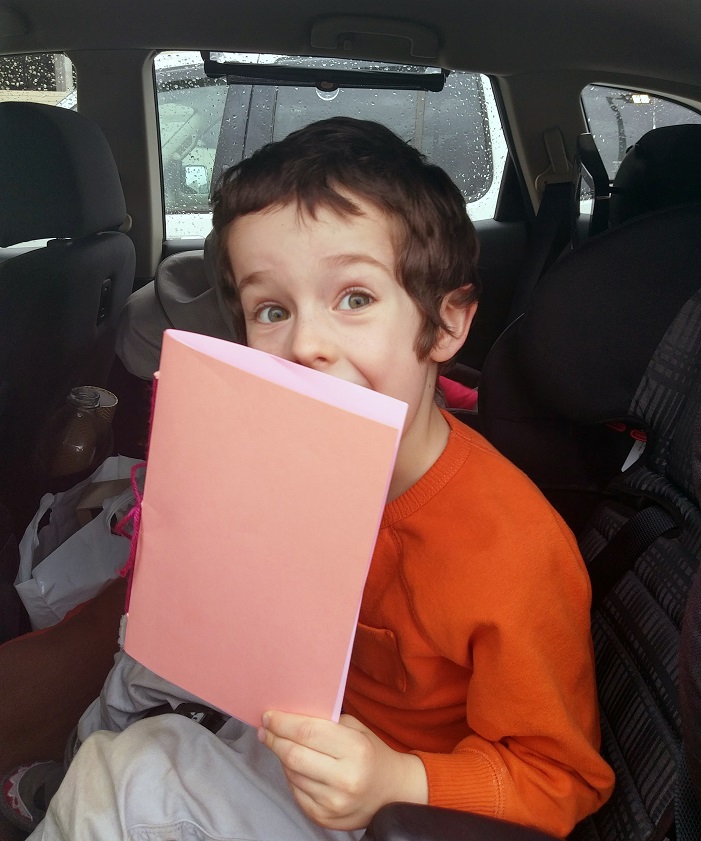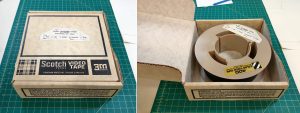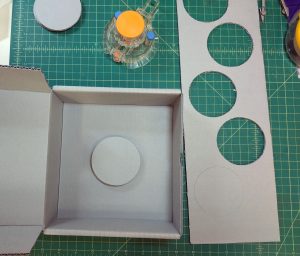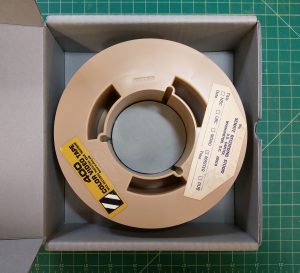Today in the Lab, Installment 1
March 5th, 2019There is a hashtag – #todayinthelab – that conservation and preservation professionals on social media attach to posts that allow followers to look over the conservator’s shoulder at what they are working on at the moment. My post today is in this vein, taking a look at and around my workbench to see the materials from Spencer’s collections that are currently awaiting or undergoing treatment. I hope to make this a semi-regular feature, since the supply of wonderful Spencer materials crossing my bench is constantly changing.
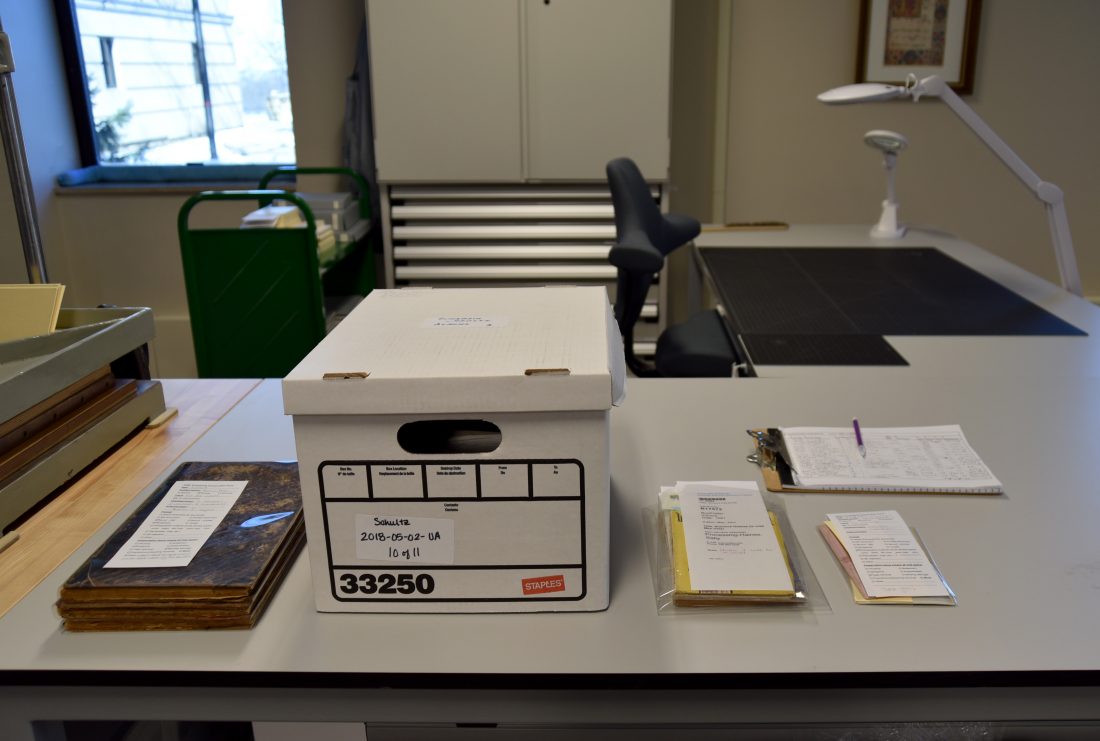
A few times a week, I will make the rounds of Spencer to collect items that have been identified as needing conservation treatment or assessment. Spencer staff will deposit fragile or damaged materials in a designated area, along with a slip on which they will note each item’s condition issue. Sometimes staff will email conservators with information about materials that need attention, or they will hand-deliver them to the lab. In any case, I record basic information about all items that come to my bench on a paper log. We have a number of spreadsheets and databases where we document our treatments, but for my day-to-day purposes, I love my low-tech list!
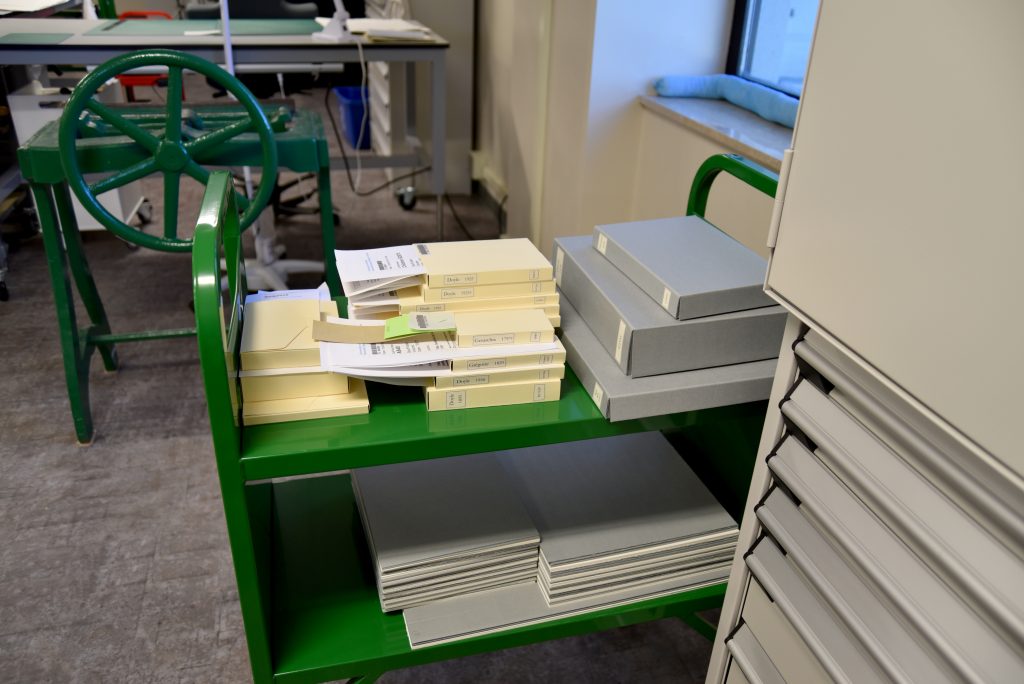
Behind my workbench I keep my brand-new but already-beloved green truck. It is rarely empty! Today its top shelf holds recently treated materials, beautifully boxed and labeled by our student employees, that I need to check off my log and return to either Processing or the stacks, as the case may be. Below are some materials I am preparing for a small but delicate rehousing project – I am making flat, safe enclosures for a group of medieval parchment documents with large seals. After working out some logistics with the curators and manuscripts processing coordinator, I have begun to pre-cut and stage as many of the components as can be prepared ahead of time in order to streamline assembly of the enclosures.

There is so much to love about our new lab space, but I am especially fond of our big workbench cabinets. These feature shelves on the top half, and an assortment of shallow and deep drawers below. Most of the drawers in my cabinet hold supplies, but I keep two in reserve for materials that I am treating. I am in the midst of a months-long project to mitigate (old, not active!) mold on a large archival collection. As I treat each box, I am replacing the old boxes and folders, so I keep a stock of fresh folders available. The folders are sharing the drawer with a scrapbook (made by a KU student prior to her time at KU) that awaits treatment.

Next to my workbench I have a beautiful press table, with two spacious shelves below. These currently hold six boxes of material from the recently acquired John C. Tibbetts Portraits Collection. The gouache paintings in this collection had been matted and framed, and I have been working to remove the mats prior to processing. I have just about completed the work on this third phase of the acquisition and look forward to having clear shelves again, if only until the next treatment comes along.
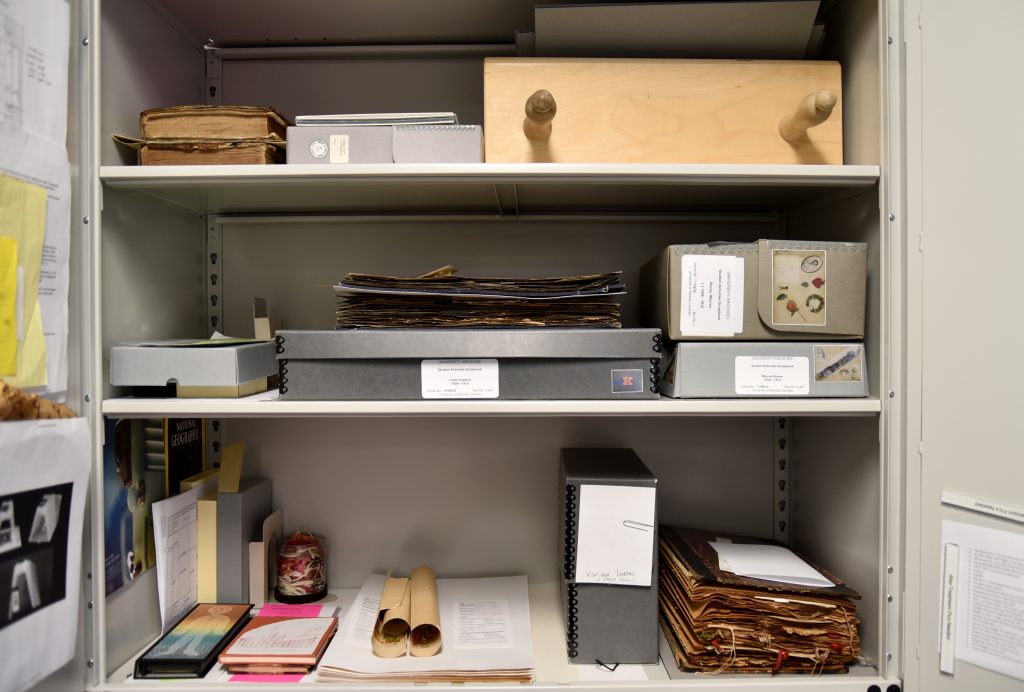
Finally, here are the upper shelves of my cabinet. Among the materials currently under my care, there are items from Special Collections (rare books, artists’ books, parchment manuscript documents), Kansas Collection (a Socialist newspaper from the Wilcox collection, a rolled and torn certificate), and University Archives (so many student scrapbooks!). There are also a few enclosure models that I’ve been working on (I’m in the process of writing up instructions for an enclosure I’ve modified, so that I can share it with other conservators), as well as diagrams and notes on other enclosures that I haven’t made often enough to have memorized yet.
Thank you for visiting my workbench!
Angela M. Andres
Assistant Conservator for Special Collections


